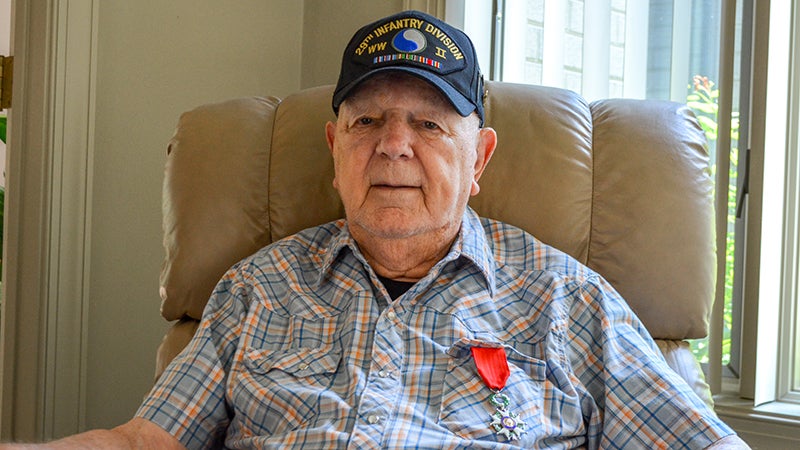Suffolk vet remembers D-Day
Published 9:35 pm Wednesday, June 5, 2019

- Robert “Jack” Ewald, a Suffolk World War II veteran, fought in the Army’s 29th Infantry Division and stormed the beaches of Normandy in the D-Day invasion. He is wearing the Legion of Honor, which was awarded to him by French President Emmanuel Macron last year.
On June 6, 1944, approximately 160,000 Allied troops crossed the English Channel and landed on the coastline of Normandy, France.
The assault — codenamed Operation Neptune — was the largest seaborne invasion in history and the beginning of the liberation of German-occupied France in World War II.
Suffolk resident Robert “Jack” Ewald, 94, fought in World War II in the Army’s 29th Infantry Division. In April 2018, he and other World War II veterans were honored by French President Emmanuel Macron with the Legion of Honor, which is awarded on behalf of the head of state to “the most deserving citizens in all fields of activity,” according to the Grand Chancellery of the Legion of Honor.
Ewald was just 19 years old when he landed on that Normandy beach with those men, and on June 6 — 75 years ago — he was told one thing: “don’t stop.”
“We had a guy laying in the water, (his) head (was) all bleeding,” Ewald said in an interview on Monday. “I reached out to grab him and pull him to the shore. I felt a gun in my back, and the captain said, ‘Don’t stop, hit the top of that hill.’
“We couldn’t stop. Not even to help anybody that was wounded or anything. The idea was to get up there and get the Jerry’s, and (that) would stop all these guys from getting killed down here.”
Ewald got on a plane for France with his family on Tuesday. He and his family are traveling to Normandy as part of the commemorative ceremonies this week for the 75th anniversary of the world’s largest naval operation.
On Thursday, Ewald and his family expect to be at the Normandy American Cemetery in Colleville-sur-Mer, where an official ceremony will be held with President Donald Trump, Macron and Ewald’s fellow veterans.
Ewald had been saving up for several years for another trip to Normandy. He recalled being back there in 2010 with his family, on that beach. It was a beautiful day — nothing like D-Day, he said.
“I never thought I’d make it,” Ewald said about going back to France. “I went there in 2010 with full intentions that that would probably be the last time I’d ever get back. Fortunately, I lived a little bit longer.”
He said he wanted to show his family some of the gun emplacements that are still standing. He also referred to a National Geographic map of the area that showed all of the hedgerows that once stood in the fields 75 years ago.
When Allied forces landed at Normandy beach, they advanced to the town of Saint-Laurent-sur-Mer. But they had to first navigate untamed hedgerows, with narrow openings covered by German snipers.
Ewald went through them with his “foxhole buddy,” M.H. Nichols, who died a few years ago, he said. They took turns covering each other. Ewald, then Nichols, and again and again they pressed on.
“We couldn’t go through them. Even tanks had a hard time getting through them,” Ewald said. “You had to go to where there was an opening … and there was always a Jerry on the other side somewhere in the hedgerow — a sniper.
“You had to be quick to get through there. It was like fighting in cities, (in that) you had to clear each house. Same type of thing. You had to clear each hedgerow. It wasn’t any fun. I was lucky.”






